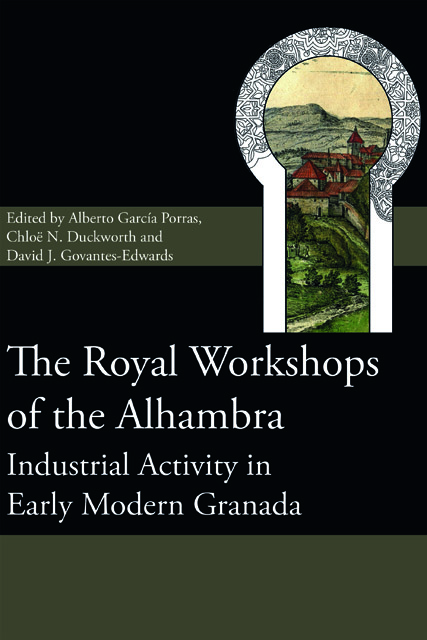Book contents
- Frontmatter
- Contents
- List of Illustrations
- List of Contributors
- Acknowledgements
- Foreword
- Introduction
- 1 The Secano: the city of the Alhambra
- 2 A holistic and reflexive methodology for the archaeological investigation of pyrotechnological activity in the Alhambra
- 3 The modern kilns
- 4 Geophysical and geochemical exploration of the industrial areas in the Alhambra
- 5 The excavation of the area of the Secano in the Alhambra: Trench 1
- 6 The excavation of the area of the Secano in the Alhambra: Trench 2
- 7 The pottery
- 8 Glass in the excavation of the Secano, the Alhambra
- 9 Furnaces at full blast: the demand for architectural ceramics for construction in the Alhambra (16th and 17th centuries)
- Conclusions
- Index
Introduction
Published online by Cambridge University Press: 20 December 2023
- Frontmatter
- Contents
- List of Illustrations
- List of Contributors
- Acknowledgements
- Foreword
- Introduction
- 1 The Secano: the city of the Alhambra
- 2 A holistic and reflexive methodology for the archaeological investigation of pyrotechnological activity in the Alhambra
- 3 The modern kilns
- 4 Geophysical and geochemical exploration of the industrial areas in the Alhambra
- 5 The excavation of the area of the Secano in the Alhambra: Trench 1
- 6 The excavation of the area of the Secano in the Alhambra: Trench 2
- 7 The pottery
- 8 Glass in the excavation of the Secano, the Alhambra
- 9 Furnaces at full blast: the demand for architectural ceramics for construction in the Alhambra (16th and 17th centuries)
- Conclusions
- Index
Summary
The Alhambra is one of the most comprehensive Islamicate palatial cities, for it served as the seat of the most long-lasting polity in the history of al-Andalus (1232–1492). This explains its complex, but well-organized, urban structure, within which workshops were a prominent feature. It is known that there were various tanneries to process hides and textiles, as well as a considerable number of pyrotechnological structures (furnaces and kilns) for the production of metal, glass, and ceramic items. Traditionally, these industrial facilities have been paid little attention by research, which largely followed an art-history approach in which the palaces were given total priority. There have been few exceptions to this. As a result, these industrial areas are poorly known, and a specific research project was sorely needed to understand their evolution over time, in particular; this is crucial, since they continued in operation long after the Castilian conquest in 1492. It is argued that it was after the fall of the Nasrid kingdom that industrial activities in the Alhambra reached their peak. The ceramics production comprised architectural elements used to decorate the palace walls, as well as everyday household accoutrements. Only during the final decades of the 18th century, and especially in the early 19th century, when Napoleonic forces left it after destroying part of the urban sector, can the industrial activity in the Alhambra be said to have been abandoned.
Keywords: Medieval and early modern Spain; technology; crafts; Alhambra.
General Introduction and History of Research
The Alhambra and the Generalife are located in the so-called Cerro del Sol, one of the last spurs of Sierra Nevada, just above the Vega of Granada. The knoll is flanked by the rivers Darro and Genil. These watercourses determined the location of the city of Granada, which was founded by the Zirid dynasty in the 11th century, after the abandonment of Madīnat Ilbīra. The last elevation, towering above the plain, is divided into two small plateaus, the Sabika and the Mauror – the seats of the Alhambra and Torres Bermejas, respectively.
The name Alhambra applies to the complex of buildings, many of which are of a palatial nature, and the vegetable gardens, woods and grazing land that surround them, located on the plateau of the Sabika.
- Type
- Chapter
- Information
- The Royal Workshops of the AlhambraIndustrial Activity in Early Modern Granada, pp. 1 - 6Publisher: Boydell & BrewerPrint publication year: 2022

